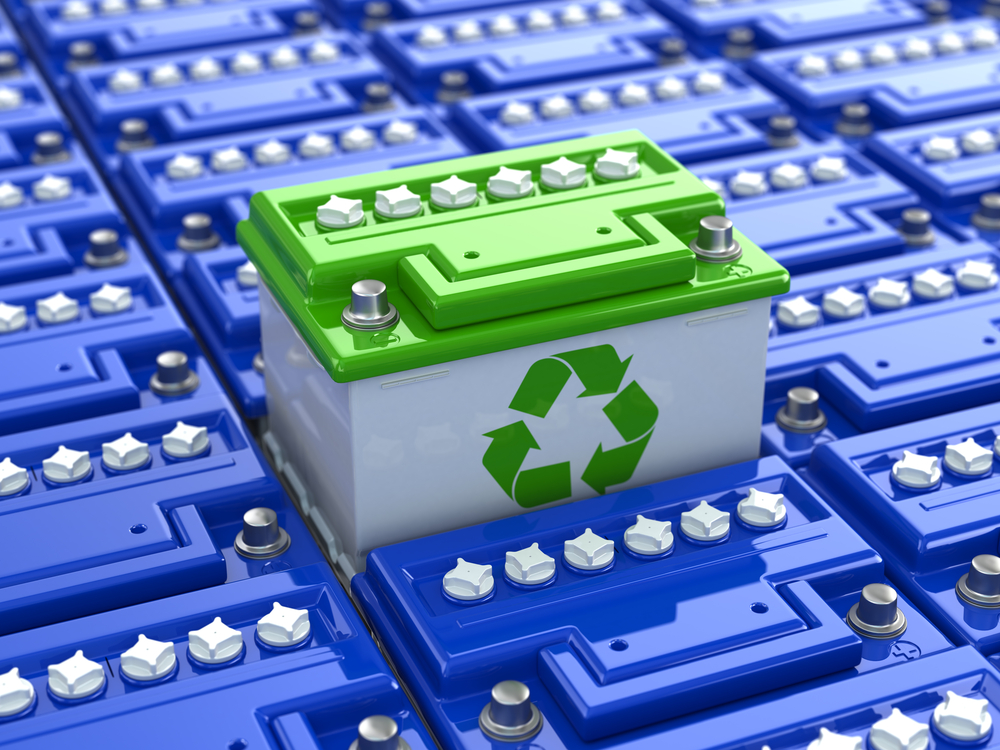Global reserves of lithium are limited — Why aren’t we recycling?
The U.S. Department of Energy announced the establishment of a Lithium-Ion Battery Recycling Prize and a research and development center for the recycling of critical materials such as cobalt and lithium from lithium-ion batteries.
The research and development center (R&D Center) is to be managed by the Argonne National Laboratory together with the National Renewable Energy Laboratory and the Oak Ridge National Laboratory.
The aim of increasing the collection and recycling rate of lithium-ion batteries from electric vehicles, consumer electronics, and other applications from less than 5.0 percent to 90 percent. The government is investing $15 million for this.
As part of the initiative, the DOE has also launched a competition for innovative recycling models, including a prize worth $5.5 million. Universities, private initiatives, and national laboratories are invited to submit their proposals.
In the announcement on January 17, US Energy Secretary Rick Perry said: “America’s dependence on foreign sources of critical materials undermines our energy security and national security. DOE will leverage the power of competition and the resources of the private sector, universities, and the National Laboratories to develop innovative recycling technologies, which will bolster economic growth, strengthen our energy security, and improve the environment.
This latest initiative is also in response to the President’s Executive Order 13817,dated December 29, 2017. The executive order identified the need for “developing critical minerals recycling and reprocessing technologies” as part of a broader strategy to “ensure secure and reliable supplies of critical minerals.”
Before anyone gets the notion that President Trump is starting to focus on the environment – The executive order also directed federal agencies to find ways to increase exploration, mining, and processing of critical minerals and streamline permits for private mining companies, according to Digital Journal.
Recycling has become critical
Looking at the data available, as recently as 2014, just five years ago, there were just three planned battery mega-factories, with over 1 GWh of cell production capacity annually, according to Waste Management World.
According to Benchmark Mineral Intelligence, there are currently 26 battery cell plants – either in production or due to expand their capacity. The combined capacity of these plants is 344.5 GWh. It estimates global supply in 2017 to have been around 100GWh.
Let’s add another piece of data to the discussion. Circular Energy Storage, a consultancy that specializes in energy storage and the circular economy says the total amount of recycled lithium could reach 5800 to 30,000 tons of Lithium Carbonate Equivalent (LCE) by 2025. But as the report also mentions, the volume of material available for recycling is limited due to poor collection systems.
Digital Journal also laid out some data, reporting on the 44.7 million metric tons (Mt) of e-waste (including lithium-ion batteries) generated globally in 2016. The estimated value of recoverable materials in that e-waste was around $64.6 billion (55 billion euros).
Why are we missing a great opportunity?
Recycled minerals, like lithium, cobalt, nickel, and manganese can be found in new batteries today, but the volumes, compared to the rapid increase in the production of EV batteries is a mere drop in the bucket. This is where Investments in additional recycling capacity and implementation of new technologies is necessary – and with the steep increase in the prices of these minerals on the global market – this would provide an incentive for change.
Interestingly, China recycles over 66 percent of its lithium-ion batteries, or 191,000 tons annually, and has created a fast-growing e-waste recycling industry. If and when North America and Europe ever get moving in developing recycling technologies, China will have already gained the competitive edge in proven technology and available capacity.
Now is the right time to establish recycling plants for lithium and other minerals found in batteries and other electronic products. And here’s just one more reason for doing this – Lithium is not a finite natural resource, folks. According to a recent U.S. Geological Survey report prepared by Brian W. Jaskula, there are currently 14 million tons of proven lithium reserves available worldwide.
Based on the typical electric vehicle battery using about about 4.0 kilograms (9.0 pounds) of lithium, this means around 250,000 tons of lithium would be required annually to produce enough electric cars to replace their combustion engine counterparts, according to Parakram Pyakurel, a Postdoctoral Researcher at the Warsash School of Maritime Science and Engineering, Southampton Solent University.
At this rate, the 14 million tons of lithium reserves would be exhausted in about 51 years.

